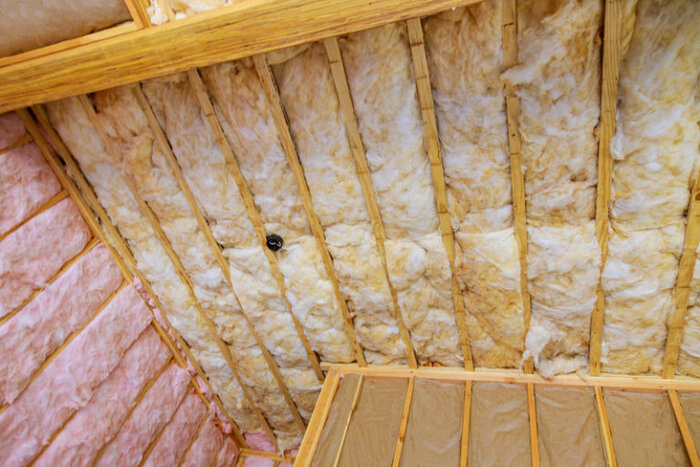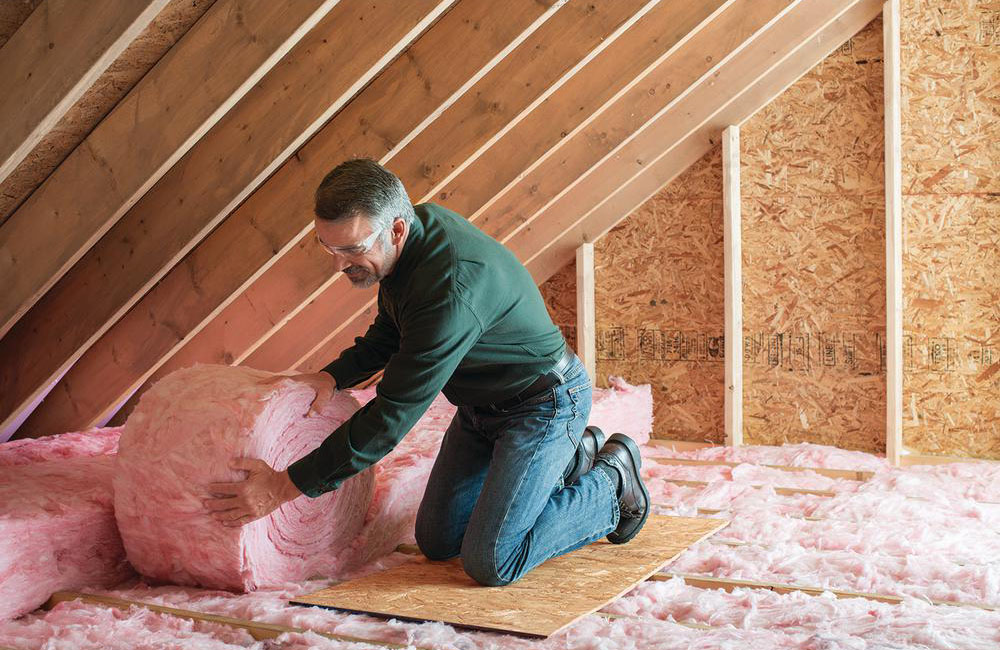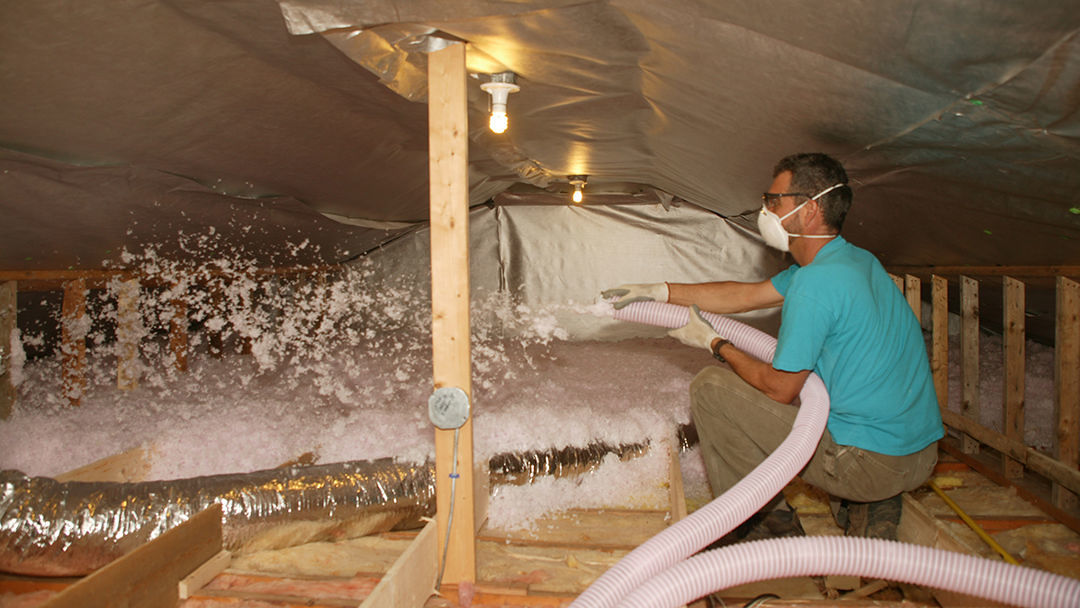Attic Insulation DFW: Increase Your Home's Value and Effectiveness
Wiki Article
Discover the Various Sorts Of Attic Insulation and Their Distinct Benefits for Your Home's Energy Efficiency

Fiberglass Insulation
Fiberglass insulation is one of one of the most typically used materials for attic room insulation due to its excellent thermal efficiency and cost-effectiveness. Composed of small glass fibers, this product efficiently catches air, creating an insulating barrier that aids keep consistent interior temperatures. Its high R-value per inch makes it specifically efficient at resisting warmth transfer, which is important for power preservation in homes.
Installment of fiberglass insulation is relatively simple, usually available in batts or loose-fill kinds, fitting various attic configurations. In addition, it is non-combustible and resistant to moisture, minimizing the danger of mold and mildew development. This resilience adds to its longevity, making fiberglass a viable long-term investment for home owners.
Moreover, fiberglass insulation is usually produced from recycled materials, which improves its eco-friendliness. The material can additionally contribute to soundproofing, reducing sound transfer in between spaces. While it is necessary to wear safety gear during setup to avoid inflammation from the fibers, the general benefits of fiberglass insulation, including energy cost savings and environmental considerations, make it a prominent choice for boosting attic room performance and advertising a comfy living atmosphere.
Spray Foam Insulation
Spray foam insulation is a highly reliable choice for attic insulation, known for its superior air securing and thermal efficiency. This cutting-edge insulation product is composed of a mix of isocyanate and polyol material, which, when incorporated, increases quickly to fill spaces and dental caries in the attic room. Its capability to comply with numerous surface areas ensures a continuous obstacle against air leakages, substantially lowering warm loss during cooler months and warmth gain throughout warmer periods.One of the key benefits of spray foam insulation is its high R-value per inch, which implies it provides excellent thermal resistance in a relatively thin application. This is especially helpful in attics where area is commonly limited. Additionally, spray foam can assist reduce dampness build-up, minimizing the risk of mold and mildew and mildew growth, which can be destructive to both the structure and interior air quality.
While the preliminary cost of spray foam insulation might be greater than traditional options, its lasting energy cost savings, combined with raised comfort and enhanced home worth, make it a worthwhile financial investment for home owners looking for improved power effectiveness. Attic Insulation DFW. On the whole, spray foam insulation sticks out as a reliable remedy for enhancing attic room insulation
Cellulose Insulation

Cellulose insulation is a popular option for attic room insulation, primarily made up of recycled paper products treated with fire retardants. This eco-friendly option is understood for its exceptional thermal performance, efficiently decreasing heat transfer in both summer season and cold weather. The thick composition of cellulose enables it to fill spaces and gaps in attic areas, offering a seamless barrier versus air leakages.
Among the substantial benefits of cellulose insulation is its ability to stand up to mold and bugs, owing to the fire resistant therapies utilized throughout manufacturing. In addition, it boasts a high R-value per inch, which converts right into premium power performance. Property owners can anticipate reduced heating & cooling costs as an outcome of improved insulation.
Installation is typically completed via blowing loosened cellulose right into the desired area, allowing for a reliable and fast process. This approach additionally decreases disturbance to the existing structure. Additionally, cellulose insulation has a reasonably reduced ecological impact, as its manufacturing process makes use of recycled materials, contributing to sustainable building practices.
Rock Wool Insulation
Amongst the numerous alternatives for attic room insulation, rock woollen, investigate this site likewise called mineral woollen, sticks out because of its remarkable thermal and acoustic efficiency. Made from all-natural or recycled products, rock wool is developed by thawing rock and spinning it right into fibers, resulting in a product that offers exceptional insulation Get More Info properties.One of the substantial advantages of rock wool insulation is its high R-value, which shows its performance in resisting warmth flow. This particular not just enhances energy performance but likewise adds to preserving a comfortable interior temperature year-round. Furthermore, rock wool is naturally fire-resistant, making it a more secure choice for homes as it can endure high temperature levels without melting or releasing hazardous fumes.
In addition, rock wool insulation stands out in soundproofing abilities, efficiently lowering noise transmission between rooms and from outdoors sources. In general, rock woollen insulation offers a comprehensive option for boosting energy effectiveness, security, and comfort in household settings.
Glowing Obstacle Insulation
Radiant barrier insulation serves as an effective remedy for reducing warm transfer in attic rooms, specifically in warmer climates. This kind of insulation jobs by showing induction heat far from living spaces, consequently lowering the quantity of heat that goes into a home during warm weather - Attic Insulation DFW. Generally composed of an extremely reflective product, such as light weight aluminum foil, radiant obstacles are set up in attic rooms, facing the roofing system, where they can obstruct incoming warmth from the sunThe main advantage of radiant barrier insulation is its ability to lower cooling costs. By mirroring warm as opposed to absorbing it, radiant obstacles can aid keep an extra stable explanation indoor temperature level, decreasing the workload on a/c systems. This effectiveness equates right into reduced energy expenses and raised convenience for home owners.
In enhancement to power financial savings, glowing obstacles can also add to boosted interior air top quality. By minimizing warmth accumulation, they assist minimize moisture degrees, which can stop mold growth and improve total air blood circulation. When set up appropriately, radiant obstacle insulation can be a vital enhancement to any kind of energy-efficient home, making it a worthy factor to consider for homeowners wanting to improve their attic room insulation method.
Final Thought
In final thought, comprehending the numerous types of attic room insulation-- fiberglass, spray foam, cellulose, rock woollen, and glowing barriers-- enables homeowners to make educated decisions concerning power performance. By choosing the ideal insulation material, considerable decreases in power costs can be attained, along with improvements in indoor comfort.

In final thought, understanding the various kinds of attic insulation-- fiberglass, spray foam, cellulose, rock wool, and glowing obstacles-- makes it possible for house owners to make informed choices concerning energy effectiveness.
Report this wiki page